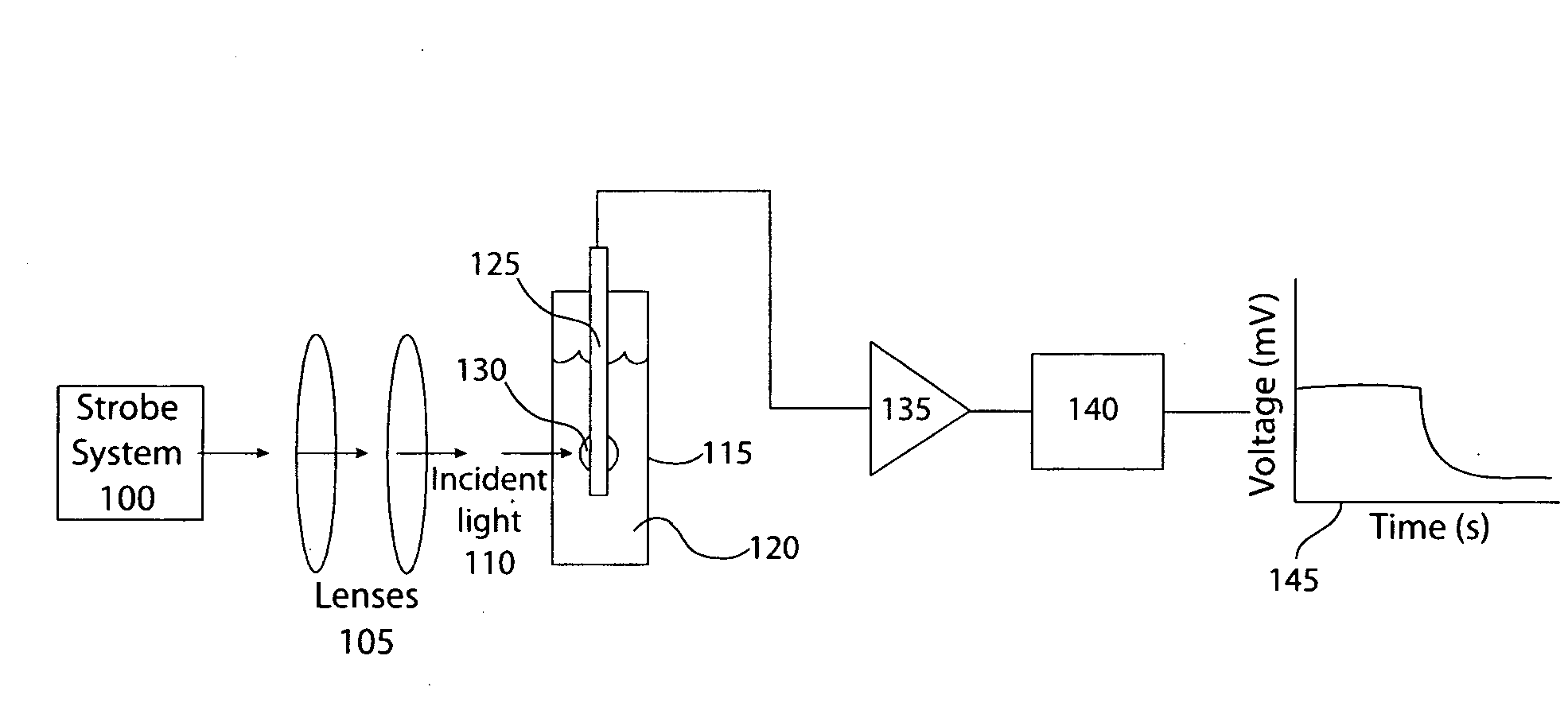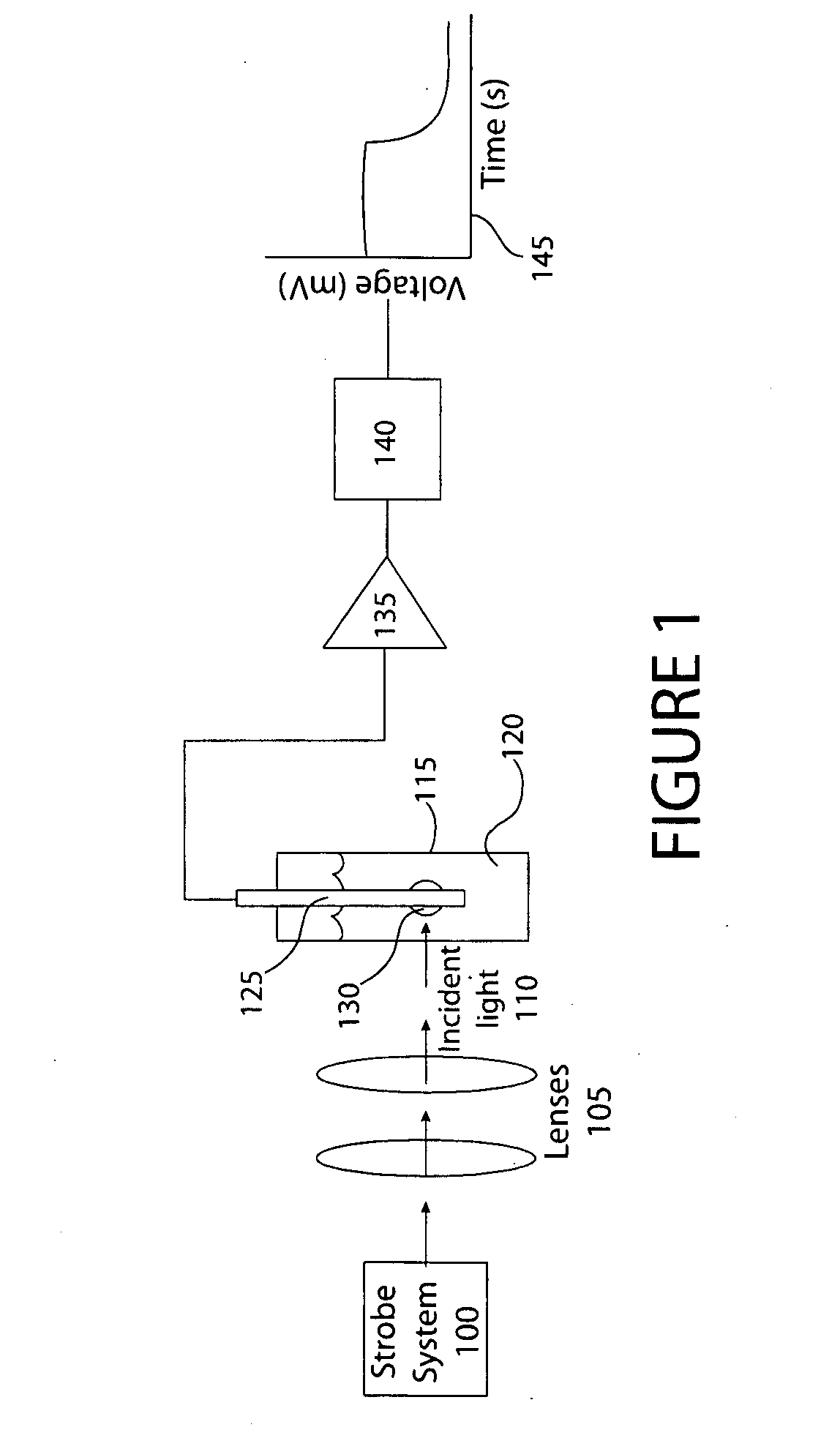Sensing device and method for rapidly determining concentrations of microbial organisms using interfacial photo-voltages
a technology of interfacial photo-voltage and sensing device, which is applied in the direction of optical radiation measurement, instruments, material heat development, etc., can solve the problems of low throughput efficiency, laborious process, and expensive equipment to analyze test samples, and achieves simple, cost-effective and reliable results.
- Summary
- Abstract
- Description
- Claims
- Application Information
AI Technical Summary
Benefits of technology
Problems solved by technology
Method used
Image
Examples
Embodiment Construction
[0030]This invention allows tests to be performed in near real-time to determine titer, without the requirement to grow micro-organisms, which can require one to several days. This current technology allows the user to simply take a sample (potable water source or lab stock culture) and use dilutions of the sample for quantification in a photo-electric titer meter. The photo-electric titer meter (i.e., titer meter) allows for a very rapid, comprehensive microbe test of aqueous solutions. Identification and quantification can be achieved with one device in a less than an hour, and near real-time.
[0031]Referring to FIG. 1, a high level schematic of an exemplary system for detecting microbial organisms and determining concentrations by measuring interfacial photo-voltages induced by flash illuminations according to principles of the invention is shown. A light source such as an ultraviolet (UV) strobe light 100 provides activation energy in the form of pulses or controllable flashes of...
PUM
 Login to View More
Login to View More Abstract
Description
Claims
Application Information
 Login to View More
Login to View More - R&D
- Intellectual Property
- Life Sciences
- Materials
- Tech Scout
- Unparalleled Data Quality
- Higher Quality Content
- 60% Fewer Hallucinations
Browse by: Latest US Patents, China's latest patents, Technical Efficacy Thesaurus, Application Domain, Technology Topic, Popular Technical Reports.
© 2025 PatSnap. All rights reserved.Legal|Privacy policy|Modern Slavery Act Transparency Statement|Sitemap|About US| Contact US: help@patsnap.com



